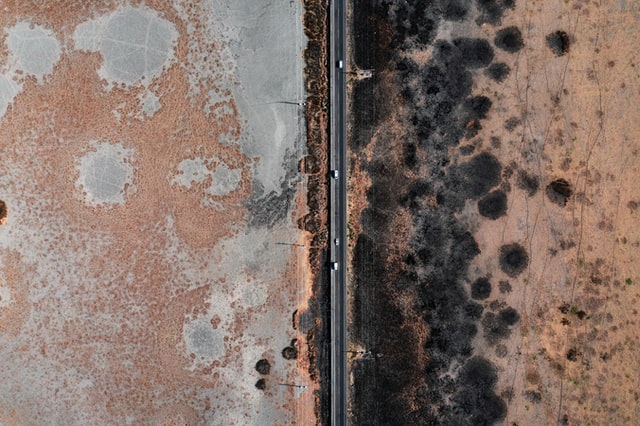Black mold is found on items like wood products, drywall, and paper. It is common in damp places. These include basements, showers, and windows. It can cause health issues, especially for those allergic to mold or with weak immune systems.
Key Takeaways
- Black mold typically grows on materials like wood products, drywall, and paper products in damp areas.
- Exposure to black mold can cause allergic reactions and inflammation in the nose, eyes, and lungs.
- Individuals with weakened immune systems are at higher risk for fungal infections from black mold.
- Black mold produces spores and mVOCs, which can irritate both allergic and non-allergic individuals.
- Prevention strategies include maintaining low indoor humidity, proper ventilation, and promptly fixing water leaks.
What is Black Mold?
Black mold is often known as Stachybotrys chartarum. It looks black or dark green. This mold loves places like wood, paper, and drywall. These materials are like food for it.
Black mold grows best where it’s warm and wet. You’ll find a lot of it in damp places. Common spots are basements, showers, and places with water leaks. These areas are perfect for this mold because they have the right mix of water and materials it needs to grow.
This mold is bad for health. People allergic to mold can get sick just by breathing it in. This is especially true for those with asthma or weak immune systems.
To stop black mold, we need to change its living conditions. Mold likes humidity over 70%, some food like drywall, and oxygen. It grows between 40 and 100 degrees Fahrenheit.
To keep black mold away, check moisture-prone areas often. This simple step can lower the risk of mold and its harmful effects.
Can Black Mold Make You Sick?
Black mold exposure can make people sick. This can range from mild irritation to severe allergic reactions. People who are more likely to get sick from it are at a higher risk.
Allergic Reactions
Mold allergies can cause fast reactions if you touch black mold. The body thinks these mold spores are dangerous and makes a chemical called IgE. This teaches mast cells to fight these spores. The next time you’re around mold, these cells release histamine. This causes allergy symptoms like stuffy noses, red eyes, and sneezing. For those with mold allergies, this shows how risky black mold can be.
Irritation from mVOCs
Black mold releases compounds called microbial volatile organic compounds (mVOCs). These give off the musty smell of mold. They can cause both allergic and non-allergic reactions. People might feel symptoms like trouble breathing, headaches, and other general problems, even if they’re not allergic to mold. Since these compounds are everywhere in moldy places, they can make the air bad. This affects the health and comfort of anyone living there.
What Happens if You Breathe In Black Mold?
Inhaling black mold spores is very risky, especially if you already have breathing problems. For those with asthma or COPD, black mold can make things worse. It might cause coughing, wheezing, and shortness of breath. This is because the mold spores can start an allergic reaction that makes your airways swell. This in turn makes it hard to breathe.
But, even if you don’t have allergies, black mold can still hurt your health. Breathing in its spores can make your throat itchy, your nose stuffed up, and your eyes red. The NIEHS warns that black mold can lead to allergies, irritations, and infections. It can even be toxic. And, if you already have asthma or other lung issues, it can make them worse. The CDC agrees with these findings.
People with weak immune systems face an even bigger danger. This includes cancer patients, those with HIV, or people who’ve had transplants. They are at a higher risk of getting fungal infections if they breathe in mold. Some people’s genes might also play a part in why black mold hurts them more.
To protect yourself, take steps to get rid of or prevent black mold. Make sure your home is not damp. Check places like basements, showers, and around windows. Keeping the humidity below 50% and improving airflow is key. And don’t forget to clean up any mold you can see. Use special products or even bleach for this. These steps will help lower the health risks from mold.
So, it’s very important to be careful around black mold, especially if you’re already at risk. Making your home a safer place is something you can do with these simple steps. This will help keep you and your family healthier.
Health Risks: Infection and Toxic Effects
People with a weak immune system are at high risk from black mold. Black mold, like Stachybotrys chartarum, grows in wet, warm places. These often include rooms with poor airflow, water leaks, or flooding. Breathing in its spores is especially dangerous for those with weak immune systems.
Black mold exposure can harm breathing and make asthma worse. Black mold is harmful because it produces mycotoxins. These toxins can hurt you if you breathe or swallow a lot of them. While experts aren’t sure, mycotoxins from black mold could cause severe health problems in some cases.
Fungal Infections
Black mold can lead to serious infections in people with weak immune systems. If you breathe in its spores, you’re at risk. This can cause illnesses like chronic lung infections, especially in babies, older adults, and those with breathing problems.
Toxicity and Mycotoxins
Mycotoxin poisoning is a big worry with black mold. It can cause bad headaches, trouble breathing, and skin issues. Stachybotrys chartarum’s mycotoxins are especially bad if you’re exposed a lot over time. So, it’s key to keep your home dry and well-ventilated to avoid mold toxicity.
Preventing mold poisoning means keeping moisture under 50% and fixing leaks right away. Using dehumidifiers and fans in damp areas can stop mold. Make sure to get rid of or dry out items like carpets or drywall if they get moldy.
What Are the Dangers of Black Mold?
Black mold, like Stachybotrys chartarum, has many health risks. It mainly affects the breathing, causes allergies, and weakens the immune system. Let’s look deeper into how it harms us under three points: making it harder to breathe, causing allergies, and weakening your immune system.
Respiratory Problems
Black mold makes it tough to breathe. It leads to ongoing lung swelling known as chronic hypersensitivity pneumonitis. This is a big worry for people with lung issues in their past. If you have asthma, mold can make it worse, causing serious attacks. The mold’s spores and chemicals they let off can increase coughing, wheezing, and feeling out of breath.
Allergy Symptoms
Black mold can bring about allergy symptoms in many. This may include a stuffy nose, itchy eyes, and skin that’s not happy. These symptoms can really affect your day and how well you feel. If you’re sensitive to mold, it’s key to limit your exposure. Keeping humidity low, using dehumidifiers, and fixing leaks quickly can help stop mold.
Immune System Impact
Mold can also mess with your immune system, especially over time. People with existing health issues or a weak immune system are at more risk. This weakens your body’s defense against sickness and can make you more likely to get ill. It’s important to take steps to prevent mold to protect your health all around.
Conclusion
Knowing about black mold’s health risks is important to keep our homes safe. There are over 100,000 kinds of molds, and 500 can harm us. So, it’s vital to be watchful. To stop black mold, we must control indoor humidity and keep our rooms well-aired. For professional mold removal services, call Green Genie today at (716) 466-6653.
Around 47% of U.S. homes have issues with mold and dampness. This shows we need to take action. Using products like bleach or vinegar can get rid of mold on surfaces. But, you might need a professional for big mold problems.
The CDC says it’s crucial to remove mold quickly from your home. Mold can really hurt your health, especially in people with breathing issues. Studies show that mold from AC systems can make breathing problems worse.
Besides allergies, mold can make you more likely to get sick. The IOM says living in damp places can cause many health problems. To avoid mold coming back, fix any structural problems and protect yourself while cleaning it. For big mold issues, it’s best to get help from professionals for a safe and lasting solution.







